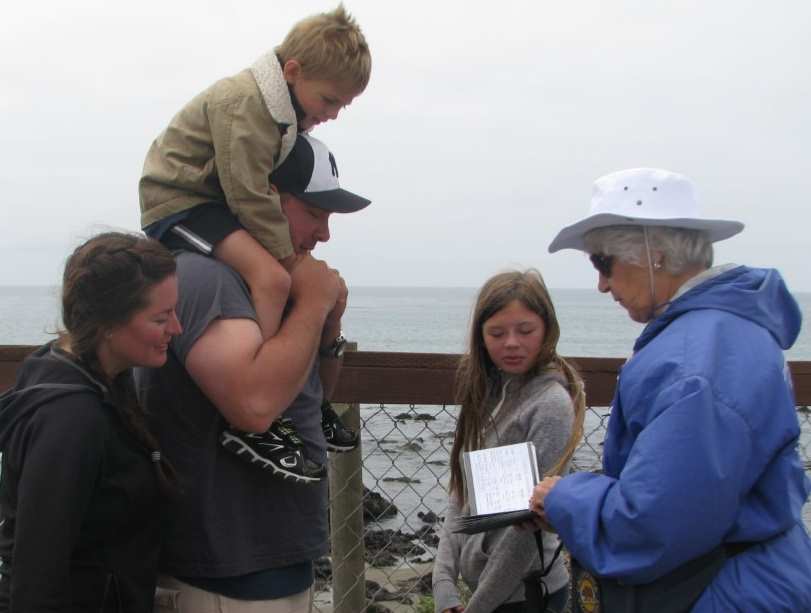
Volunteer Docent for 10 Years
Q: How did you become interested in serving as a docent for the Friends of the Elephant Seal?
A: While visiting the Central Coast about 12 years ago I heard about the Elephant Seals. After visiting the Elephant Seal Rookery I was “taken” by the opportunity to learn more about the them and to be able to spend time outdoors on the coast talking with visitors. When I retired I applied to be a docent. This is my tenth year (2018) serving as a docent for Elephant Seals.
Q: What is the most valuable piece of information you have learned about the Elephant Seals?
A: One of the unique things I have learned is that elephant seals can dive more than a mile deep and survive! This is totally amazing as is the anatomy and physiology that supports this capability.
Q: What is the most common or popular question you receive?
A: Why are they throwing sand on themselves?
Q: What is your favorite thing to teach visitors about the San Simeon Elephant Seal?
A: Visitors are always surprised, and rightfully so, when they find out that the elephant seals do not eat while resting on our coast. Elephant seals migrate great distances to forage and then return here twice a year to rest when their young mate and birth and then again to molt.
Q: What is the question you wish tourists would ask?
A: I wish visitors would ask why the elephant seals chose this spot as their home. It is a wonderful story. This is their home and we have the opportunity to see them in their natural habitat.
Q: How many people do you guide/interact with on average?
A: On a slow day I might interact with 50 visitors, but usually I have the opportunity to talk with to a 100 or more visitors. It is great fun. I serve as a docent on the bluff four times a month.
Q: Why is your role as a docent so important in fulfilling the mission of the Friends of Elephant Seal?
A: The mission of Friends of the Elephant Seals is to educate people about elephant seals and other marine life and to teach stewardship for our ocean. I have the opportunity to do this with each and every visitor.
Q: What has been the most rewarding part of being a docent?
A: Most rewarding is the joy and amazement when a visitor has the opportunity to witness elephant seals as they live their lives on our coast. Many stop out of curiosity at first thinking the beach is full of logs.
Q: What are some of the critical milestones you’ve seen over the last 20 years since the Friends of the Elephant Seal (FES) was founded?
A: The website is a valuable resource. Keeping it filled with great information and installation of the elephant seal WebCam has been remarkable. And for us as docents our handbook is a treasure of information that we keep updating. Other milestones are the wooden walkways that make it easy for visitors to walk along the rookery viewing the elephant seals.
Q: What’s a secret fact about elephant seals that not many people know? Or something you wish more people knew?
A: It’s amazing that each of these seals swim in the ocean all by themselves finding their way; even the young pups migrating for the first time. I feel this is a miracle! How do they figure out where to go, and then return to this their home on the coast is absolutely amazing.
Q: What else would you like to share about your role as a docent?
A: I have never had a “bad” day being a docent. It is always rewarding and fun. As the elephant seals population increases the amount of research increases. The Piedras Blancas population has grown from their first arrival on our beach in 1990 to around 25,000 elephant seals now identifying this as their home. It is exciting. I grew up on a farm in Iowa and am thrilled that I am now talking with visitors on the coast of the Pacific Ocean.

